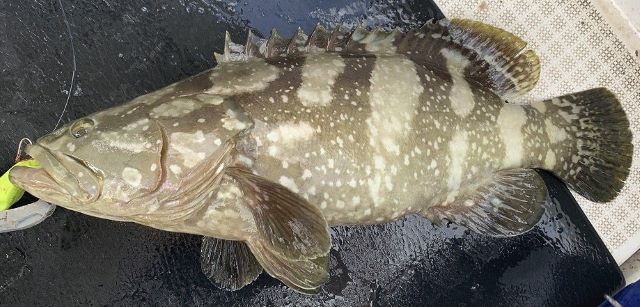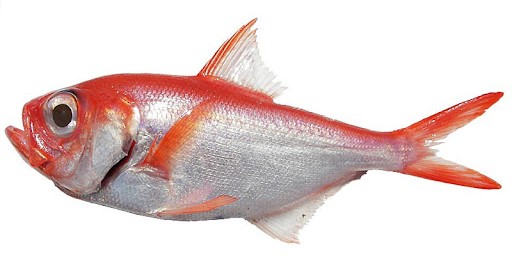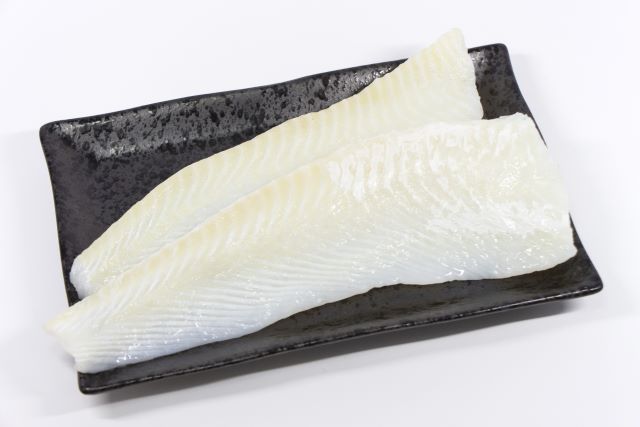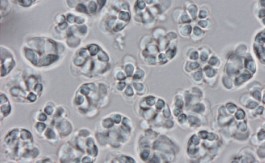
What is hybrid fish?
Both Yamame (Landlocked Sakuramasu) and Japanese Iwana (Char) are members of the salmon family. Iwana and Yamame both inhabit the upper reaches of rivers, although Iwana prefers slightly cooler water. In rivers where each species lives alone, both fish occupy the upper reaches of the river, but in rivers where both species live, they do not mix, with Iwana occupying the uppermost reaches and Yamame occupying the lower reaches after a certain point in the upper reaches.
In nature, different species sometimes interbreed and produce hybrid fish. For example, hybrids between Yamame and Iwana are common in nature. The characteristic spots of the Iwana look like those of the Saba (Mackerel), a marine fish, and hence the name Kawasaba. They also rarely become smoltified (silvering) and become the descending sea type, but they do not reach sexual maturity.
Incidentally, the Kawasaba is thought to have been created by the uncontrolled release of Yamame into an area originally inhabited by Iwana, resulting in the mating of two species whose habitats do not originally overlap. The “hybrids” created by thoughtless releases may be a symbol of the destruction of genetic diversity.
What is hybrid artificial fish?
In the aquaculture industry, high growth and survival rates, good flesh quality, and disease resistance are important requirements for a superior species, and artificial crossbreeding has long been used as a method to create such breeds.
In 1964, Kinki University in Japan succeeded in breeding the first hybrid artificial fish, a female Red seabream (Madai) with a male Blackhead seabream (Kurodai). Since then, he has produced many hybrid combinations. The name “Ma-kurodai” is a combination of “Madai” and “Kurodai. In addition, he has created nearly 20 new fish species, including Madai x Hedai (Ma-hedai), Madai x Chidai (Ma-chidai), Ishidai x Ishigakidai (Kin-dai), and Buri x Hiramasa (Buri-hira).
Typical hybrid artificial fish will be mentioned briefly.
What is Buri-hira?
Buri hira is a crossbreed between a female Japanese amberjack (Buri) and a male Goldstriped amberjack (Hiramasa). Buri, which is in season in winter, is characterized by its high fat content and strong flavor, but its meat is tender and its dark red meat (chiai) tends to discolor during the summer. Hiramasa, on the other hand, is firm, has less dark red meat (chiai), and is less prone to discoloration, but has less fat and a lighter flavor, and is only available in summer.
Buri-hira is a very tasty fish that combines the “good points” of these two fish species and combines the “umami” of Buri with the ” chewiness and beauty” of Hiramasa. Because it is completely farm-raised, it can be served all year round, and major conveyor-belt sushi chains have already begun serving Buri-hira. Buri-hira can be caught in the wild very rarely, but they are so few that they are not generally available on the market.
What is Kue-tama?
It is a hybrid species, having as its father a Giant grouper (Tamakai), one of the world’s largest members of the grouper family that can grow to 270 cm in length and 400 kg in weight, and as its mother a Longtooth grouper (Kue), which is a rare and high-end fish with an outstanding taste and popularity.
The hybrid is characterized by the fact that it inherits the growth rate of Tamakai and grows to shipping size in about two years, whereas it normally takes four to five years for farmed Kue to grow to shipping size.
This makes it possible to significantly reduce production costs, and it also has properties that make it resistant to disease and easy to grow. Major conveyor-belt sushi chains have already begun offering Kue-tama.
What is Be-ster?
Be-ster is a hybrid of Beluga and Sterlet, known for producing the finest caviar among sturgeon. Developed by Russia several decades ago for aquaculture, the Be-ster was created amid a worldwide ban on capturing wild sturgeon as an endangered species.
What is Kin-dai?
Kin-dai is a hybrid of a female Barred knifejaw (Ishidai) and a male Spotted knifejaw (Ishigakidai) and was first successfully produced by Kinki University in 1969, and patented and trademarked in 1975.
Ishigakidai, on the other hand, takes more than six years to mature and produces fewer eggs, but grows quickly to commercial size. Kin-dai combines the best features of both, with a good texture and excellent taste. Its name is the same as the abbreviation for Kinki University.
Ishidai is called “Kuchiguro (kuchi means mouth and guro means black)” because its body turns silvery white and the area around its mouth turns black. Ishigakidai, on the other hand, is called “Kuchisiro (shiro means white)” because they have a black body and the area around their mouth turns white. Kin-dai’s entire body turns black, and the tip of its mouth also turns black.
What is Ma-chidai?
Kinki University has also produced a hybrid Ma-chidai, a cross between Red seabream (Madai), which grows well, and Crimson seabream Chidai, which has a less faded red coloration, and has traits that give it a red coloration like natural fish and faster growth than Chidai.
Finally, a second generation has already been produced from the sexes of the hybrid fish. If the hybrid fish are released into natural waters, contamination will occur through genetic infiltration. We should not leave a bad legacy for future generations.
Finally, a shocking incident occurred involving Atlantic salmon, a hybrid artificial fish that has already been put into practical use.
On February 9, 2025, an incident occurred at the world’s largest salmon processing company, Mowi, located in Troms County, Norway, where 27,000 farmed salmon escaped. The company offered a reward of approximately $45 per fish for their capture.
Experts warn that the escaped farmed salmon pose a significant risk to wild salmon in the region. They could compete with wild salmon for spawning grounds, potentially spreading diseases like salmon lice. Additionally, there are concerns about the impact of hybridization, as escaped farmed salmon could interbreed with wild salmon and alter their genes.
The same incident has occurred in Japan. However, no capture operation has been implemented.
Fish that should not exist in the wild have been repeatedly sighted in Kagoshima Bay. According to experts, these are hybrid fish created by artificially crossbreeding the high-value fish kue and the tamakai, known as one of the world’s largest groupers. It is likely that they escaped from a farm, but details remain unclear. The possibility of natural reproduction cannot be ruled out, and experts are concerned about the impact on the ecosystem.



